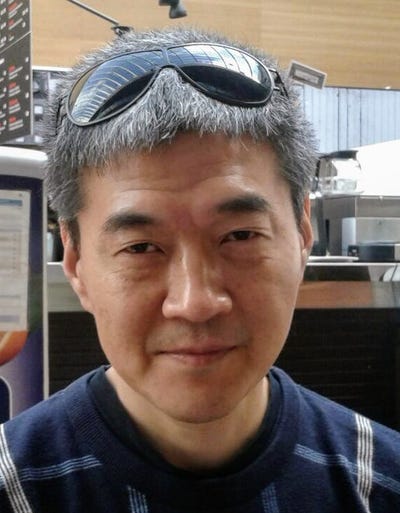Deepening O-RAN Alliance crisis stokes fear of global technology splitDeepening O-RAN Alliance crisis stokes fear of global technology split
Ericsson has joined its Nordic competitor to voice concern over the presence of American sanction targets in the OpenRAN industry group, casting further doubt over the future of the lauded technology.
September 1, 2021

Ericsson has joined its Nordic competitor to voice concern over the presence of American sanction targets in the OpenRAN industry group, casting further doubt over the future of the lauded technology.
A couple of days after Nokia decided to suspend its technical activity with the O-RAN Alliance, in fear of American punishment over its engagement at the forum with companies recently put on the American “entity list”, Ericsson expressed similar concerns. First reported by Light Reading, the Swedish kit vendor said, “the current situation may hamper progress within the O-RAN Alliance and we are keen to see the situation resolved as quickly as possible.”
The “current situation” that has made Nokia, then Ericsson, jitter is the recent addition to the American “entity list” of three Chinese members of the Alliance. Kindroid, a chips company, Phytium, a supercomputing company, and Inspur, a server maker, have been accused of working with the Chinese military, and have joined 260 other Chinese companies, including, most famously, Huawei, on the entity list.
It should not be a surprise that, given O-RAN Alliance’s legacy (born out of a merger of the American-led xRAN Forum and the Chinese-led C-RAN Alliance), there are a strong Chinese contingency. According to research by Strand Consult, by the end of 2020, 44 of the 200 odd Alliance members are companies coming out of China. However, until the recent change in status of the three, or until Nokia’s lawyers (or the law firms they hire) noticed the change, the high level of Chinese representation had not been an issue.
Even being put on the entity list does not necessarily mean an abrupt end of jointly contributing to industry standards. After Huawei and its 68 non-US affiliates were put on the list the Commerce Department’s Bureau of Industry and Security issued a “Temporary General License” to allow American companies to continue the engagement with Huawei and its affiliates that was deemed “necessary for the development of 5G standards as part of a duly recognized international standards body.”
However, the general licence does not help O-RAN Alliance’s case, or put Nokia and Ericsson at ease, because it was both temporary (valid from May 20, 2019 to August 19, 2019) and specific (only applied to engagement with Huawei and its affiliates, none of which are members of the Alliance). Probably more problematic is that, unlike IEEE, IETF, ISO, ITU, ETSI, 3GPP, TIA, and even GSMA, which were listed as exemptions on the general licence, the O-RAN Alliance isn’t recognised as one of the international standards bodies. This is due to the nature of the Alliance’s work. Instead of developing standards, it “develops technical RAN specifications on top of 3GPP standards”, as Strand Consult put it in a recent research note.
The Alliance is therefore faced with a daunting task to deliver visible and fast change to avoid more companies following Nokia’s example. That would accelerate the Balkanisation of mobile technologies between China and the western world.
To overcome the almost existential crisis, the O-RAN Alliance has several options. The first is to up its lobby efforts to the US government to either extend a general exception licence to cover these three companies newly added to the entity list, or to recognise the Alliance as an international standardisation body, or, preferably, both. For this the Alliance should mobilise its American members. Despite that the Alliance is registered as a trade association in Germany (eingetragener Verein, or e.V.), the country that contributes the largest number of members is the US. They range from OpenRAN specialists like Parallel Wireless to IT giants like HPE and semiconductor companies like Intel. The problem with this approach is not only that it’s time consuming but also that it has a low probability of success, given the growing antagonism against China in the American government.
A more radical option would be for the Alliance to preemptively rid itself of its Chinese members entirely. This would be safe for the foreseeable future, but it would not only be an extremely laborious process (taking out all the codes contributed by the Chinese members) but also become effectively a de-merger, negating the very raison d’etre of the Alliance. This approach could spell the end of a unified standard for 5G and future generations of mobile technology.
A “third-way” option is for the Alliance to put its own house in order, as Ericsson implied by “seeing the situation resolved” or when Nokia said “to allow the Alliance time to analyze and come to a resolution.” This could mean the Alliance should change its charter to automatically suspend companies’ membership or expel them when they are put on the entity list (or similar sanction lists from other countries). This is probably the most applicable approach at the moment, though it will not eliminate any uncertainty for the future.
China itself doesn’t help minimise the risk of split either. A new Data Security Law coming into force today will inject more caution to the business plans of any company operating in the country, not only because the law is broad and strict but also because many concepts and processes are vaguely defined (probably deliberately so). Those offering communications, cloud, and internet services will be particularly concerned as they handle large quantities of data. A possible future scenario could see companies either de-emphasise the market, or build a Chinese wall inside the company, effectively creating two sets of standards and two sets of operations.
About the Author
You May Also Like










.png?width=300&auto=webp&quality=80&disable=upscale)


_1.jpg?width=300&auto=webp&quality=80&disable=upscale)